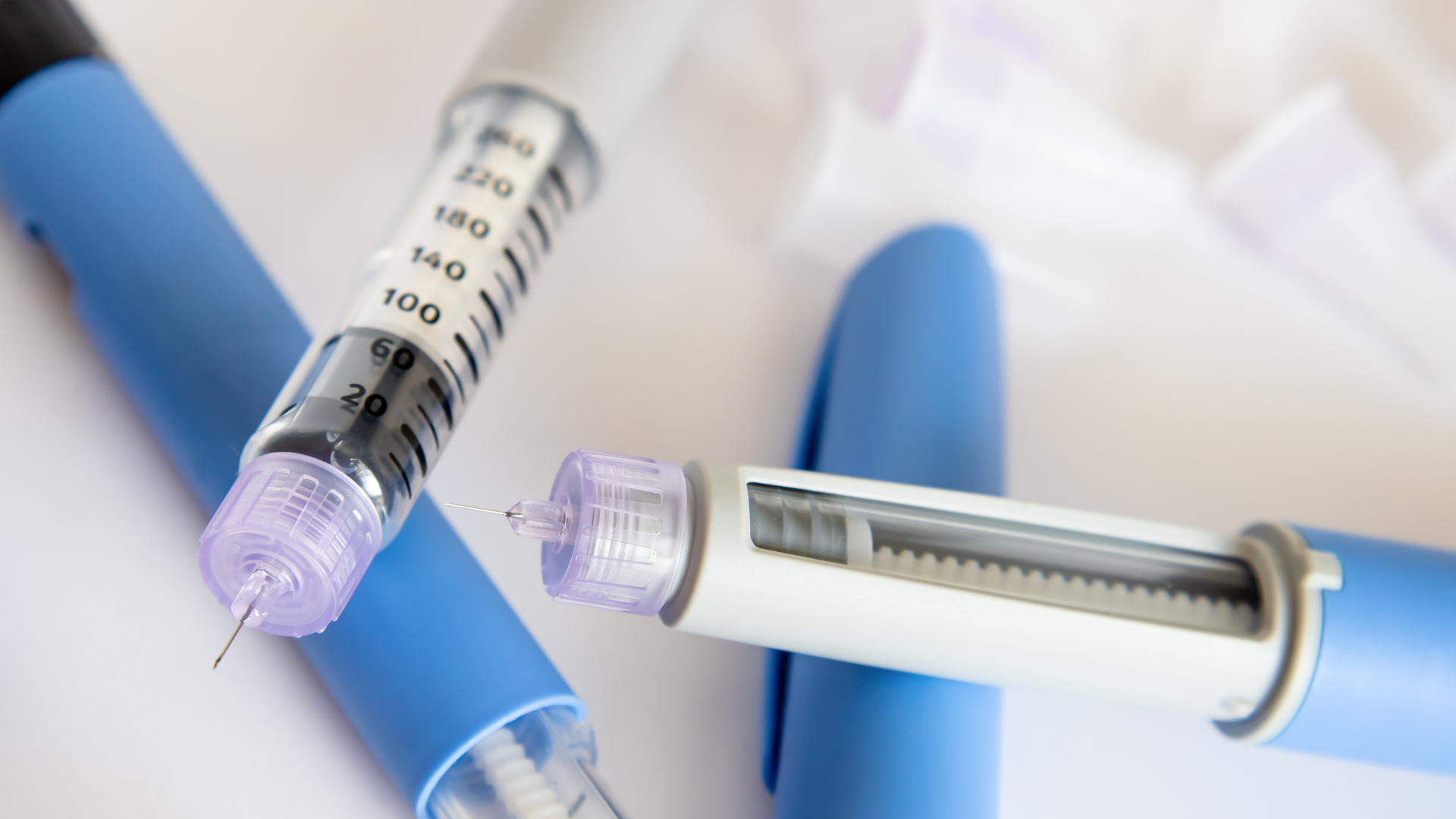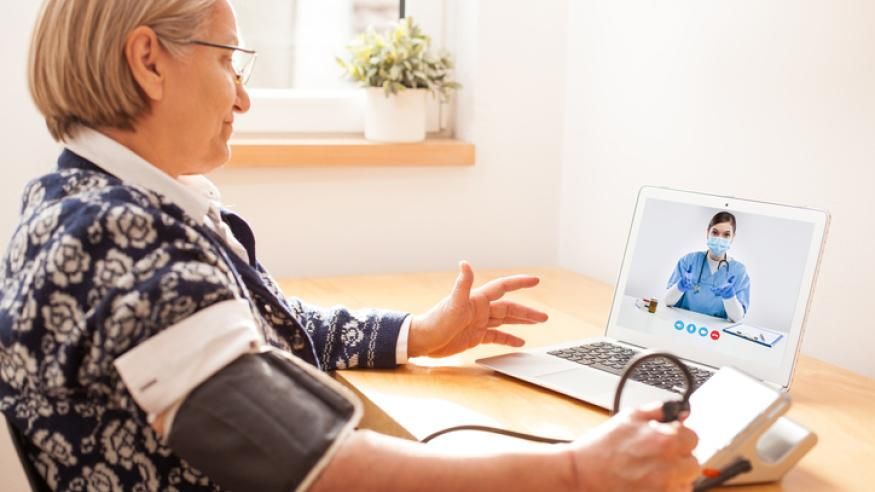Alpha Lipoic Acid for Diabetic Neuropathy: Does It Work?
What is neuropathy? And more specifically, what is diabetic neuropathy? What are the symptoms and how can you prevent and treat neuropathy?
When someone hears about the long-term complications of diabetes, problems with the feet, foot ulcers, and even amputations are often brought up and can be some of the scariest outcomes. What leads to these issues is something called neuropathy, or damage to the nerves.
But neuropathy, and those subsequent complications, aren’t by any means a given – and prevention is possible. What is neuropathy and what can you do to avoid it entirely, or minimize it so that you can keep your feet, and the rest of your body, as healthy as possible?
What is the difference between neuropathy and diabetic neuropathy?
Neuropathy is the term used to describe any damage to nerves in the body (for example, an injury from a car accident can damage the nerves). Diabetic neuropathy, or diabetes-related neuropathy, is the term used to specifically describe the nerve damage from high glucose levels (hyperglycemia) over the long term.
Diabetes can cause three main types of neuropathies: peripheral neuropathy (medically referred to as distal symmetric sensorimotor polyneuropathy), autonomic neuropathy, and focal neuropathy.
Peripheral neuropathy affects the nerves outside of the brain and spinal cord, and often leads to symptoms involving the hands and feet. “This is what most people associate with diabetes-related neuropathy,” said Chris Memering, a nurse and inpatient diabetes care and education specialist at CarolinaEast Health System in New Bern, North Carolina.
Peripheral neuropathy involving the feet is the most common form of diabetic neuropathy. Loss of function in particular nerve fibers can change sensation and reduce strength in the foot. Loss of sensation can lead to injury from shoes that don’t fit, stepping on sharp objects you can’t feel, or not knowing the sidewalk is too hot. Neuropathy can also lead to pain, burning or other unpleasant sensations which may respond to medication.
But diabetes isn’t the only condition that can cause peripheral neuropathy. Other conditions that can lead to peripheral neuropathy include heavy alcohol consumption, trauma, nerve entrapment (such as that which occurs in carpal tunnel syndrome), vitamin B deficiency, chemotherapy, and an autoimmune process that attacks the nerves.
Neuropathy can also affect the functioning of the autonomic nervous system (which controls things like blood pressure, heart rate, digestion, and bowel and bladder function). This is called autonomic neuropathy. Autonomic neuropathy can lead to a variety of complications.
“In diabetes care, many people are familiar with hypoglycemia unawareness, erectile dysfunction or female sexual dysfunction, gastroparesis [when the stomach can’t empty properly and digestion slows], neurogenic bladder [when the nerves that tell your brain to tighten or release the bladder muscles don’t operate properly], or orthostatic blood pressure changes [dropping blood pressure when you stand up],” Memering said, adding that all these could be a result of neuropathy.
Finally, focal neuropathy results from issues with one or more nerve roots and usually happens suddenly. Focal neuropathies often involve both motor functioning – such as weakness – and sensory deficits, which can cause discomfort and pain.
What causes neuropathy?
Chronic hyperglycemia can damage both small and large nerve fibers. Over time, elevated glucose levels, often made worse by high triglycerides (a type of fat that can be found in the blood) and associated with inflammation (the body’s natural way of fighting infection) can cause damage to the nerves. That damage disrupts the way nerves interpret sensory information and how the messages about sensation are transmitted to the brain.
Usually, nerve damage from high blood sugar levels happens in the long nerves first (which run from your spine down to your toes), which is why the symptoms of peripheral neuropathy occur first in the feet. “The length of time someone has lived with diabetes increases their risk of developing neuropathies, as does that person’s level of blood glucose, in terms of A1C, Time in Range, and glucose variability,” Memering explained.
In essence, higher glucose levels over time increases your risk for developing neuropathy. This was confirmed by the famous Diabetes Control and Complications Trial (DCCT) and Epidemiology of Diabetes Interventions and Complications study (EDIC). The studies showed that the prevalence of confirmed peripheral neuropathy was 64% lower among participants in the intensive management group (those who managed their blood glucose carefully with treatment and kept their levels as close to normal as possible).
What does neuropathy feel like?
Symptoms of neuropathy usually start in the toes and progress upward. The sensations experienced with peripheral neuropathy differ from person to person. Some describe the feelings they have as numbness or tingling, while others say it feels like burning. Some say they are sensitive to being touched and cannot bear the feeling of a sheet or blanket covering their feet, while others describe it as feeling like they are always wearing a sock or a glove.
“Ultimately, you could end up losing protective sensation – which can be very dangerous and puts you at risk of not realizing when a part of your body is hurting or being injured,” Memering said. “While you may be able to still feel pressure – you know you are stepping on the ground with your foot – you may not be able to feel pain if you step on something sharp or hot.” This means you might not withdraw your foot from the unsafe environment, harming it further, and without realizing the extent of the damage.
The biggest concern about peripheral neuropathy involving the feet is that the loss of normal pain sensation can lead to greater skin and tissue damage. “Injury can result in the formation of a foot ulcer, which, if infected, can progress to ongoing tissue damage that can lead to amputation,” said Dr. Robert Gabbay, the chief scientific and medical officer for the American Diabetes Association. That’s why it’s so important to prevent, recognize, and treat any symptoms of neuropathy.
How is neuropathy diagnosed?
To assess for neuropathy, your healthcare team should do a thorough examination of your feet looking for sores or ulcers, changes in skin color, diminished pulses and any abnormality or injury to your foot. They can test for diminished strength, a change in your ability to know the position of your toes, and a change in sensation or sensory perception.
A foot exam will always involve taking off your socks and shoes, and your healthcare professional will inspect your feet to check for color changes, pulses, open areas, redness, rashes, and the overall condition of your feet, said Dr. Cecilia C. Low Wang, a professor of endocrinology, diabetes, and metabolism at the University of Colorado Anschultz School of Medicine.
A monofilament test uses a soft fiber to test for sensation in various parts of the feet and body, and a tuning fork can also help healthcare professionals understand how much sensation a person has lost. The monofilament test, as well as a pinprick test, can check to make sure you have good sensation, while other tests will evaluate vibration and position sense (whether you are aware of where your foot is). “The main question I would suggest asking your diabetes provider is whether they notice anything concerning about your foot exam, and whether they think you need to do anything different, or see an additional specialist, such as a podiatrist,” said Dr. Low Wang.
In this age of telehealth visits, some podiatrists have been sending a monofilament (a small strand of nylon attached to a piece of plastic) to a person’s home and teaching them how to use it to determine if they have reduced sensation in different areas of the feet. Podiatrists might even examine a person’s foot onscreen during a video visit and ask questions about how the foot feels or looks. “If there’s something of concern, they will schedule an in-person visit,” added Memering.
If someone is experiencing symptoms of autonomic neuropathy, a healthcare professional may recommend a specific test depending on what the autonomic symptoms are. For example, if there are issues with blood pressure control, taking your blood pressure as you change positions from lying to sitting to standing or using a formal tilt-table test, may show loss of autonomic control of how your body regulates your blood pressure. If you have symptoms of delayed gastric-emptying (stomach-emptying), specialized radiology tests might be ordered that show the time it takes for food to exit the stomach. The Mayo Clinic has an informative list about many of these tests. If you have any symptoms of autonomic neuropathy, such as bladder or erectile dysfunction, feeling faint on standing up, or bloating and fullness, talk to your healthcare professional and explain what you are experiencing.
What are the best treatment options for neuropathy, especially in the hands and feet?
Although it is not always possible to prevent neuropathy completely, the best way to slow its progression (as shown in the DCCT) is to closely manage your blood sugar levels and try to stay in range as much of the time as possible. If neuropathy does develop, medications can decrease the burning and tingling sensations, said Dr. Gabbay.
“Diabetes is a leading cause of neuropathy, and the higher someone’s blood sugar levels are over time, the more likely they are to develop neuropathy,” Dr. Gabbay said. “The good news is by managing blood sugar levels, one can significantly reduce their risk of developing neuropathy.”
With painful neuropathy, “treatments are generally to try to manage symptoms,” Memering said. “Medications such as Neurontin [gabapentin, a drug used for pain and seizures], Lyrica [pregabalin, a drug used for pain and seizures], or Cymbalta [duloxetine, a drug used for chemical balance in the brain] may be used to help with pain associated with painful peripheral neuropathies. These medications can be very effective, but it may take a few weeks to adjust and find the right dose. However, people should know that the medications can also be somewhat sedating.” Other drugs that may be effective include drugs used for mood disorders such as venlafaxine, nortriptyline, or amitriptyline, said Dr. Low Wang, but they may have side effects at higher doses and with older age.
Dr. Gabbay added that neuropathy “is a very active area of research to identify new and effective treatments.”
There are also various treatments to help improve the symptoms of autonomic neuropathy:
- For Postural Blood Pressure Changes:
- If you have a significant decrease in your blood pressure on standing, your healthcare professional can teach you how to get up slowly to allow your body to regulate your blood pressure with positional change.
- You can also wear an abdominal binder, which Memering described as “a big elastic girdle that puts more pressure on the big blood vessels in the body,” so that they have more support when changing positions.
- Other treatments include adjusting salt intake, using compression stockings, doing physical activity to avoid deconditioning, and staying hydrated, said Dr. Low Wang.
- For Neurogenic Bladder:
- If you are experiencing a neurogenic bladder, urinating at regular intervals during the day and night can help the bladder empty even if you no longer feel the urge to urinate. You might also undergo a urinalysis or a bladder scan, said Dr. Low Wang. Medications can also help.
- For Gastroparesis:
- Eating low-fiber, low-fat foods in smaller and more frequent meals and getting a greater proportion of calories from liquids might help, said Dr. Low Wang.
- Sometimes the drug metoclopramide (Reglan) may be prescribed and gastric electrical stimulation might be used in severe cases.
- For Erectile Dysfunction:
- You may be prescribed one of the medications – sildenafil, tadalafil, avanafil, or vandenafil – but you may also need to undergo a physical exam, or other tests.
If you are experiencing any of the symptoms of neuropathy, you should speak with your healthcare professional to determine what diagnostic tests need to be done and what treatment course might be best for you.
Can you reverse diabetic neuropathy?
Currently, neuropathy can’t be reversed, but its progression may be slowed. Keeping blood sugar levels in the recommended targets is the key to doing so, Memering said. “The use of diabetes technology may be very helpful – especially continuous glucose monitors – for keeping your blood sugar in range, along with eating a varied diet, including vegetables and fruits, and exercising regularly,” she said.
Tips for living with diabetes and neuropathy
The two best things someone with diabetic neuropathy can do are to:
- Manage their blood sugar levels to keep the neuropathy from getting worse.
- Check their feet regularly, both at home and during healthcare appointments.
Check your feet at home
Dr. Gabbay, Dr. Low Wang, and Memering each recommended that all people with diabetes, whether young or old, newly diagnosed or not, should regularly check their feet. Dr. Gabbay advised, “Use a mirror to see the bottoms of the feet and make sure there are no cuts or ulcerations” that would need immediate attention to ensure they don’t worsen. If need be, ask someone in your household to help you inspect your feet.
To help avoid foot injury, Dr. Low Wang recommended: “Always wear socks and well-fitting shoes, avoid going barefoot, and look at shoes before putting them on to be sure there is nothing in them.”
No matter where you are in your diabetes journey, daily foot checks “partly establish the habit before there are any problems, but are also a way to get to know your body so you can understand what is normal for you and what is not,” Memering said. “That way, when there is a change, you can all your healthcare office right away. Don’t wait until your next appointment – call,” she said, adding that they should be able to tell you if you need to make an appointment right away.
Remember, as with many complications of diabetes, for neuropathy prevention is key! To learn more, view or download our infographic on preventing neuropathy.
About Cheryl
Cheryl Alkon is a seasoned writer and the author of the book Balancing Pregnancy With Pre-Existing Diabetes: Healthy Mom, Healthy Baby. The book has been called “Hands down, the best book on type 1 diabetes and pregnancy, covering all the major issues that women with type 1 face. It provides excellent tips and secrets for achieving the best management” by Gary Scheiner, the author of Think Like A Pancreas. Since 2010, the book has helped countless women around the world conceive, grow and deliver healthy babies while also dealing with diabetes.
Cheryl covers diabetes and other health and medical topics for various print and online clients. She lives in Massachusetts with her family and holds an undergraduate degree from Brandeis University and a graduate degree from the Columbia University Graduate School of Journalism.
She has lived with type 1 diabetes for more than four decades, since being diagnosed in 1977 at age seven.
Credited: Patrick Sullivan Source: diaTribe Learn MAKING SENSE OF DIABETES
Healthy Bites















